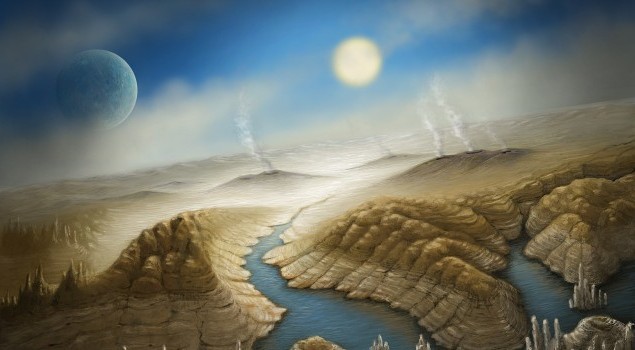Here is a bit more about this exoplanet that is so similar to ours:
The planet is 1,400 light-years away from our Solar System and orbits a star astronomers call our Sun’s cousin. While this star is four percent more massive and ten percent brighter, the distance between it and Kepler 452b is approximately the same as Earth’s distance from the Sun. The planet itself has a radius 60 percent larger than Earth and is suspected to be rocky, with a thick atmosphere and a significant amount of water.
Depending on how you look at this it could be a minor discovery or one of the most important from NASA since the launch of the Hubble.
There is a video below and one of the comments from “Andy” has this opinion in regards to the distance:
“focus under 100 lights year from earth not 1400 light years ,are you guys nutts?”
Well I’m not sure I agree with it but can see where his logic is coming from as many would like to find a closer planet. Although this one doesn’t seem that far, again depending on your perspective.
thanks to observer.com for the great info
thanks to SETI institute for the pic

The water looks refreshing
Good question, why attempt to land on it if it’s hostile to any carbon lifeforms!
Artist concept. We will have to master light speed first in order to effectively get there.
Lets continue this conversation next century….
Not we, nor any man made probe, will ever enter that solar system. Not even with the fastest new EM drive.
You understand that’s an artists rendering and not a photograph? Lol
Mike Guay iknowbro
Guy complains it’s 1400 not 100lightyears away. Points out that the universe is 93.000,000,000 light years in diameter. So that’s 0.00000014% of the potential distance it could be. That’s pretty fucking close.
So is the moon and mars.
Yeah, I know, but we know more about the Moon and Mars, it’s the uncertainty factor!
It’s only took 40 years from Einstein’s discovery of relativity to the creation of a working nuclear power plant. You’re insinuating that someone somewhere will answers some of our engineering problems preventing us from building working models of warp drives (NASA actually made one that warps electrons) and wormhole makers. Yet we already established that it works in nature and can actually be made. And with Moore’s law in regards to technology doubling every 18 months, I’d say we could be less than 100 years away from touching down on that thing 1400 light years away.
100 years ago the average person had never seen a working light bulb in action. we’ve already populated another planet with robots and sent probes beyond our solar system. I think you’re completely disregarding what we’re capable of. But not with that attitude 🙂
http://www.space.com/9882-warp-drives-wormholes.html
Jeffrey Borders
Get back to me on that.